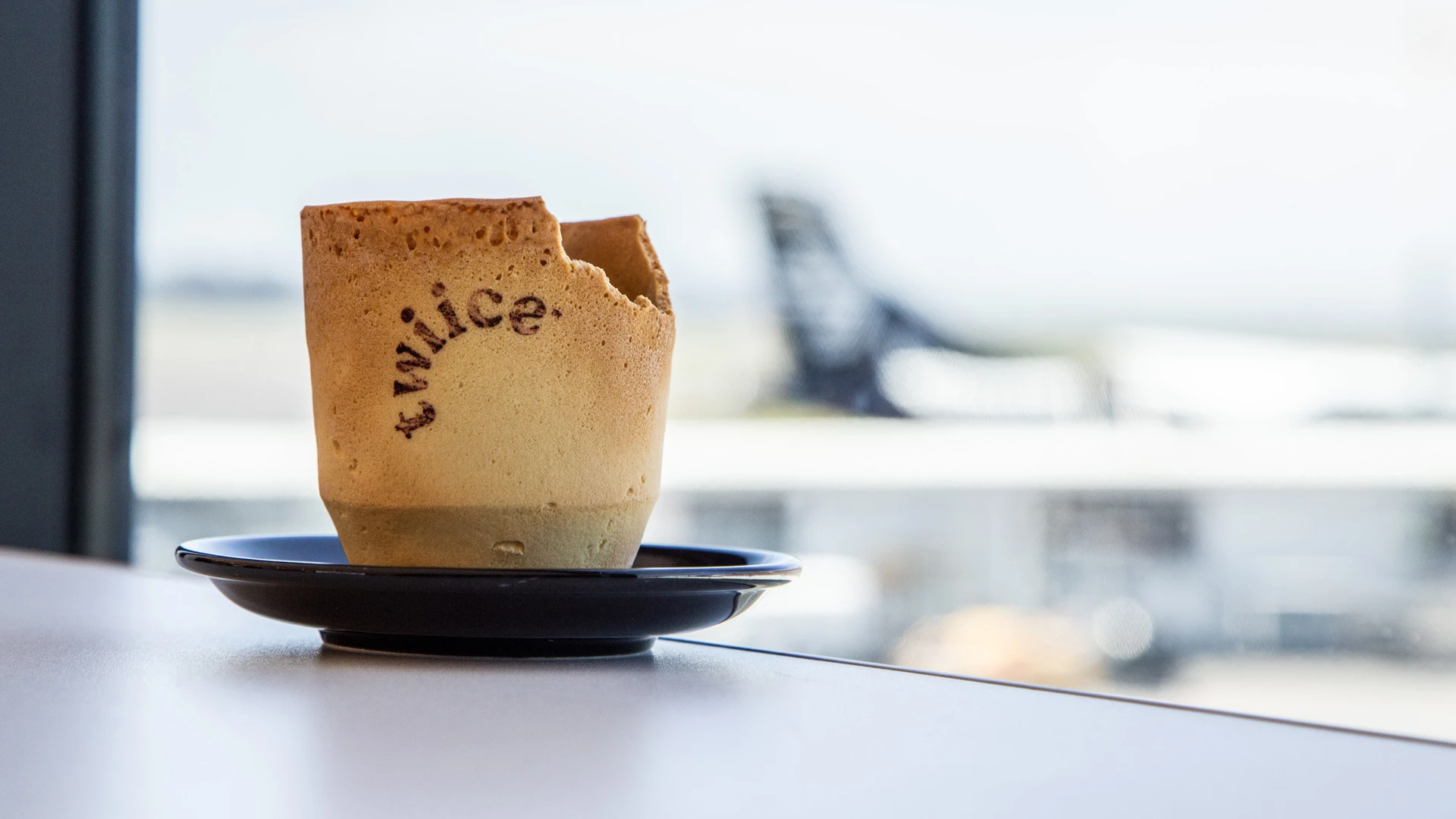You might think that all airplane food tastes like plastic packaging, but good news: In a twist of fate, you can now eat airline packaging that actually tastes like food. Because it is food—at least when you fly Air New Zealand.
The airline has partnered with New Zealand-based, family-owned company Twiice to trial its edible biscotti coffee cups as part of an effort to further reduce in-flight waste. While the airline’s current cups are compostable, the ultimate goal is to remove them from landfills completely, according to Air New Zealand senior manager customer experience Niki Chave. Making them edible could be one way to do so, sending the 8 million coffee cups the airline serves per year straight into our stomachs rather than the garbage.

The addition of the edible coffee cups is part of a larger move by Air New Zealand to adopt more environmentally sound business practices. According to its 2019 Sustainability Report, the airline replaced individual plastic sauce packets with sauces in reusable dishes on its Business Premier cabins on North America and Hong Kong services this year, a practice the airline says could divert 200,000 plastic packets from the landfill each year. While the report doesn’t state how many single-use plastics it uses overall, it cites other waste-reduction programs, as well. The airline says it surpassed its 2018 goal to transition 24 million single-use plastic products to lower-impact alternatives, and has expanded the project scope to 55 million single-use items. It also removed single-use water bottles from some regional flights, which it says will divert more than 460,000 bottles from landfills and, by reducing the aircraft’s weight, lower carbon emissions by more than 300 tons per year. (I’ve reached out to Air New Zealand about exactly how many single-use plastic products it uses every year, and will update this story when I hear back.)
Even before the trial of the edible cups, the airline had recently made the switch to compostable plant-based cups in all lounges and aircraft, and is encouraging travelers to bring their own reusable cups to use onboard. The move reduces the airline’s dependence on what it calls New Zealand’s limited waste infrastructure, which the company felt constrained its ability to properly recycle and compost products that otherwise wouldn’t need to go to a landfill, according to that same report.
The top three airlines in the U.S.—Delta, American Airlines, and United—have adopted similar practices (though, to be fair, they make no mention of consumable cups). Instead, all cite reductions in single-use plastics and recycling efforts (both Delta and American claim to be the first). United, for its part, claims to be the first to partner with Clean the World, an organization that recycles partially used hygiene products, like soap and shampoo.
With this trial run of edible cups, we’re seeing a foray into new territory as the airline industry is seemingly in conflict with itself: both making efforts to become more green and, at the same time, becoming more and more environmentally harmful as emissions from air travel increase. It’s hard to imagine that edible cups can make a noticeable difference in the face of 900 million metric tons of carbon dioxide emissions from airplanes in 2018. But it’s also hard to imagine that demand for air travel will decrease. So in an incremental change toward sustainability, Air New Zealand made edible cups. If only airlines would work on making the food edible, too.
Recognize your brand’s excellence by applying to this year’s Brands That Matter Awards before the early-rate deadline, May 3.
